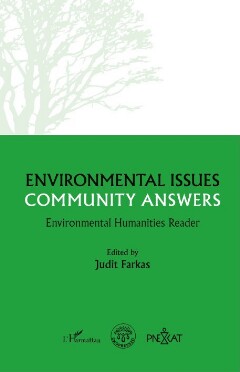Page 188 [188]
186 GÁBOR MÁTÉ
as the “collective imagination” of researchers well-versed in environmental themes
(Rácz 2011: 13). In Hungary, the need to learn about the history of landscapes is
present in geography, botany, ethnography, history, archaeology, aesthetics, literature
and the technical sciences. Instead of a unified landscape history, each discipline
attempts to interpret and define the landscapes in accordance with their own
attitude and sources. A good example in Hungary was the series of conferences
organized by Gyorgy Fiileky with the title “Changes of the landscape in the Carpathian
Basin.” Despite having a new buzzword for each conference, the interest in the
landscape was more kaleidoscope-like (see e.g. Füleky 2004, 2012). Another
characteristic of contemporary approaches is that landscape often overlaps with
environment and ecology and at times is synonymous with them. Accordingly,
“landscape-relevant” contents do not necessarily appear under the category of
landscape. This chapter cannot undertake an overview of landscape historical
research, but it is important to mention two large groups of landscape interpretations.
Jan D. Whyte divided landscape historical research into objective and subjective
approaches (Whyte 2002: 12-26; Antrop 2019: 2). The goal of objective research
is to explore the long-term process of landscape changes traceable to human and
natural impacts. What is important is the examination of the physical components
of the landscape, hence it may be called a “structural and landscape approach”
(Whyte 2002: 15). English landscape history has achieved significant results
regarding the issue, method, interpretation of the sources, and local excavations.
One of the classic researchers of this field of study is William George Hoskins,
who described the landscape historical periods of England from the Neolithic to
the mid-20" century in his book “The Making of the English Landscape” (Hoskins
1981). A milestone of his writing was using the whole landscape as a source of
history. Landscape history, as it unfolded from the 1950s, urged researchers to
answer questions which highlighted processes, and in particular to explore the
kinds of social factors and environmental conditions which influenced how
landscapes were shaped (Antrop 2019: 7; Johnson 2005: 120). The investigations
were based on aerial photos, archival maps and documents, and intense field
inspection. The critics of Hoskins’s landscape history disagreed with its subjectivity,
its sometimes overgeneralized, even ahistorical interpretation, without failing to
emphasize its undoubtable merits (Whyte 2002: 15-16; Matless 1993). The
criticism of posterity clearly shows that the differentiation of the objective and
subjective approaches became the basic guideline of landscape historical research
after the spatial turn.
The German cultural landscape historical school applies the objective approach
by placing the process of the emergence of landscapes in the foreground. In several
of his works, Zoltan Ilyés, who died young, wrote about this school (summarized
in: Ilyés 2007: 18-21). With his research in Gyimes, he realized one of the classic
Hungarian adaptations of the German trend. His book is an excellent epitome of
the “morphogenesis of cultural landscapes”, subjecting the landscape historical
examination after dissecting it to find “persistent” and “relic” elements. Ilyés’
research also follows the subjective approach in that he also presented the symbolic
interpretive planes of the landscapes, apart from the system of landscape elements
(hayfields, meadows, fences, etc.).
The essential part of objective landscape investigations is the recognition of the
elements of the landscape, their cadastral registration and interpretation. One of

